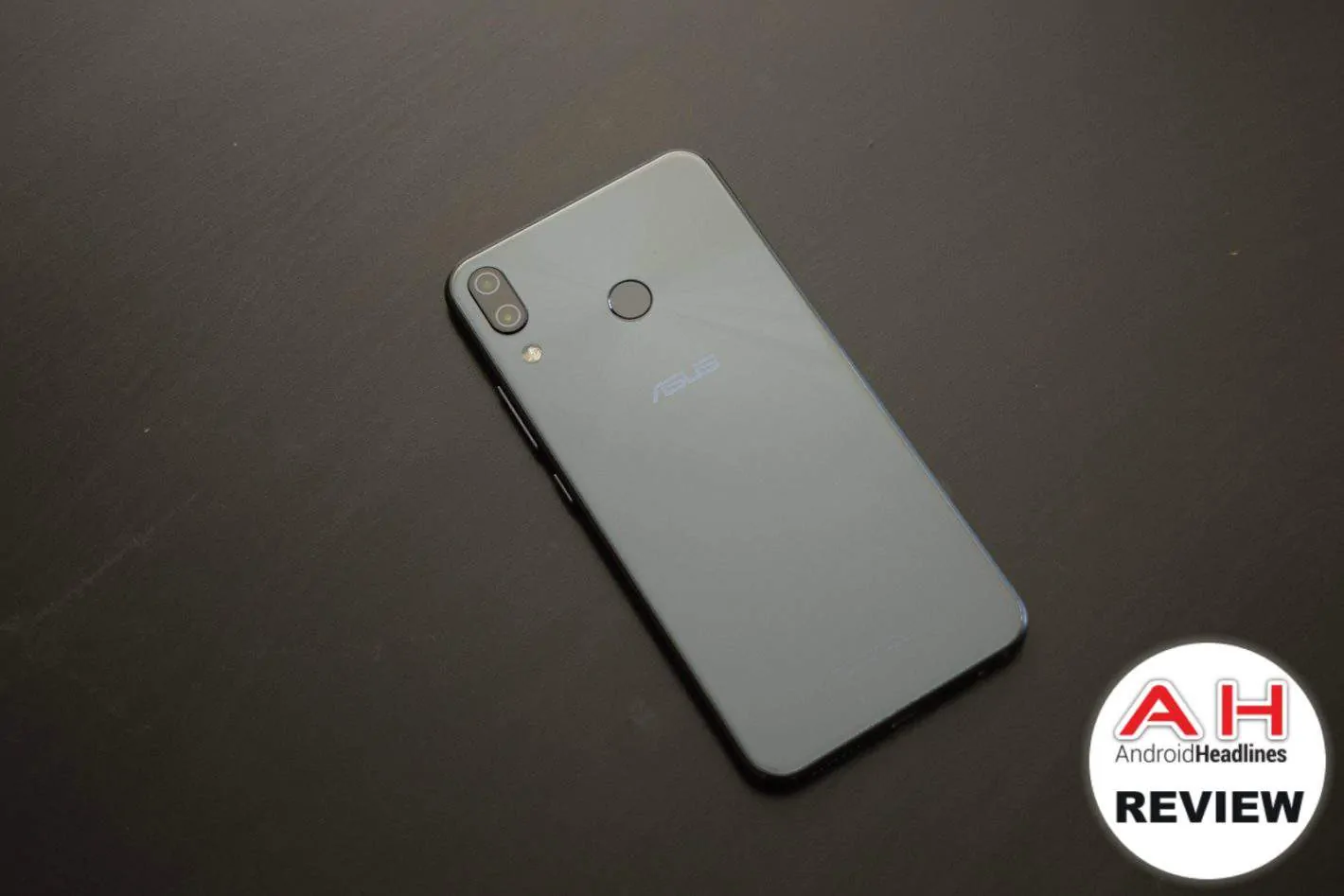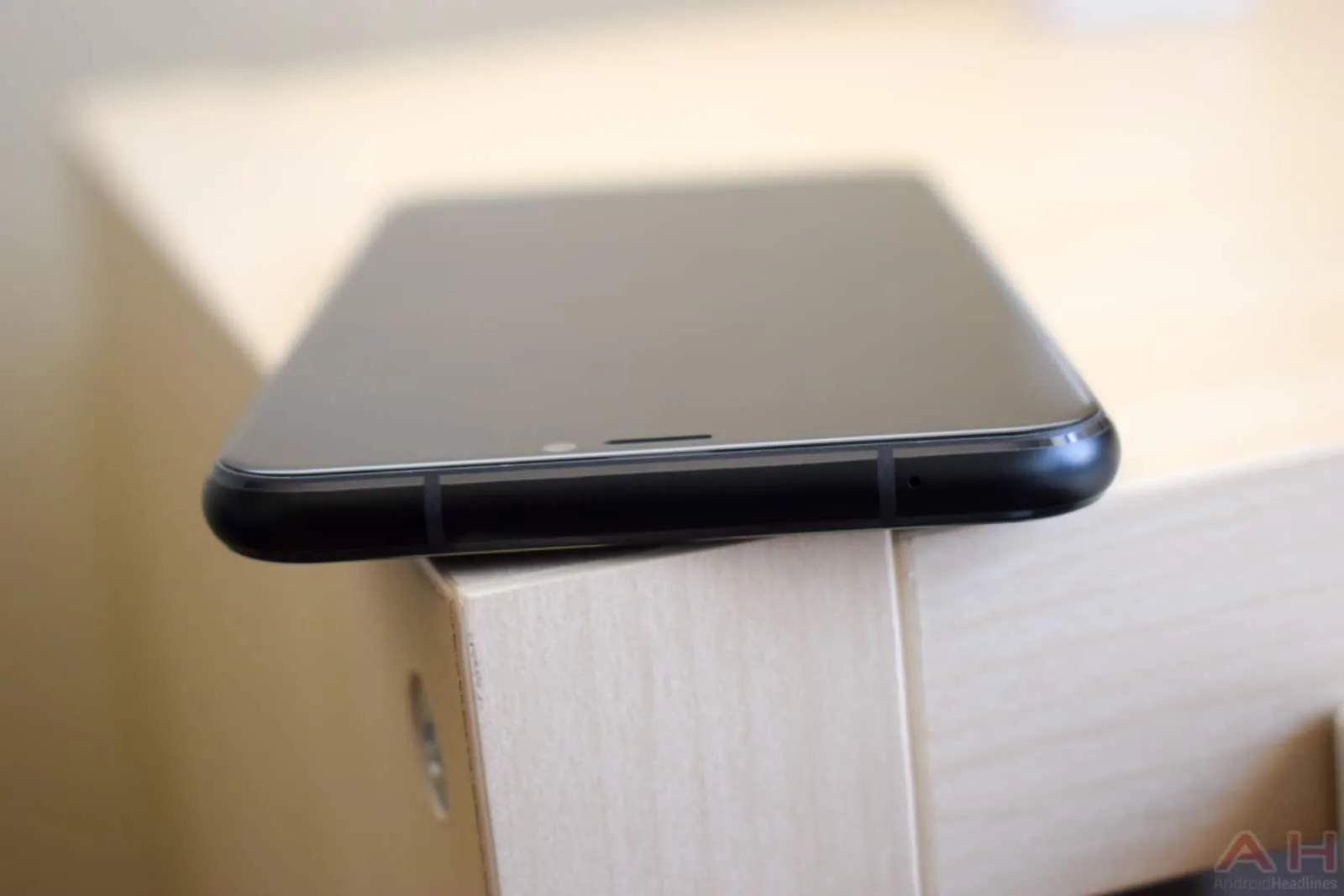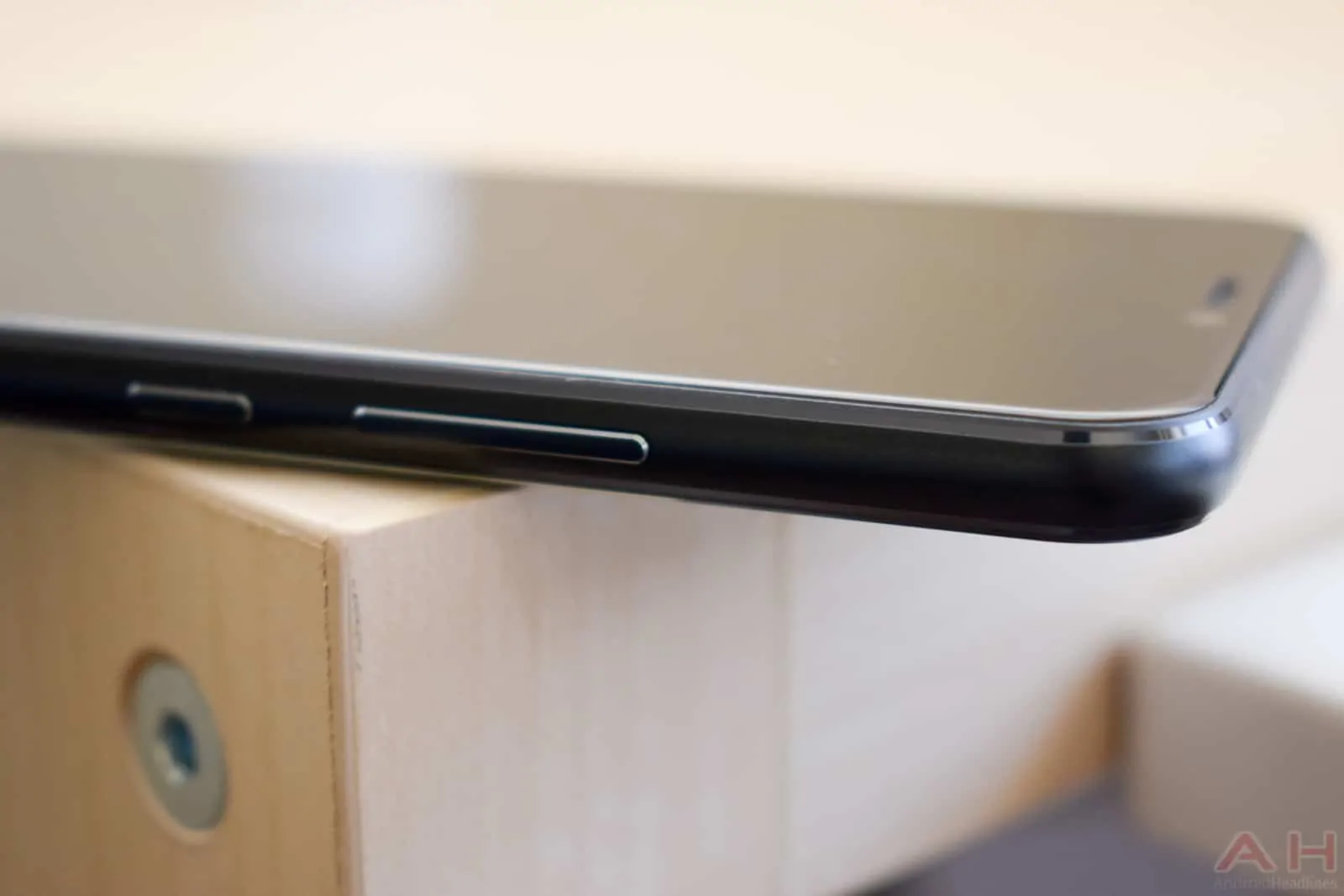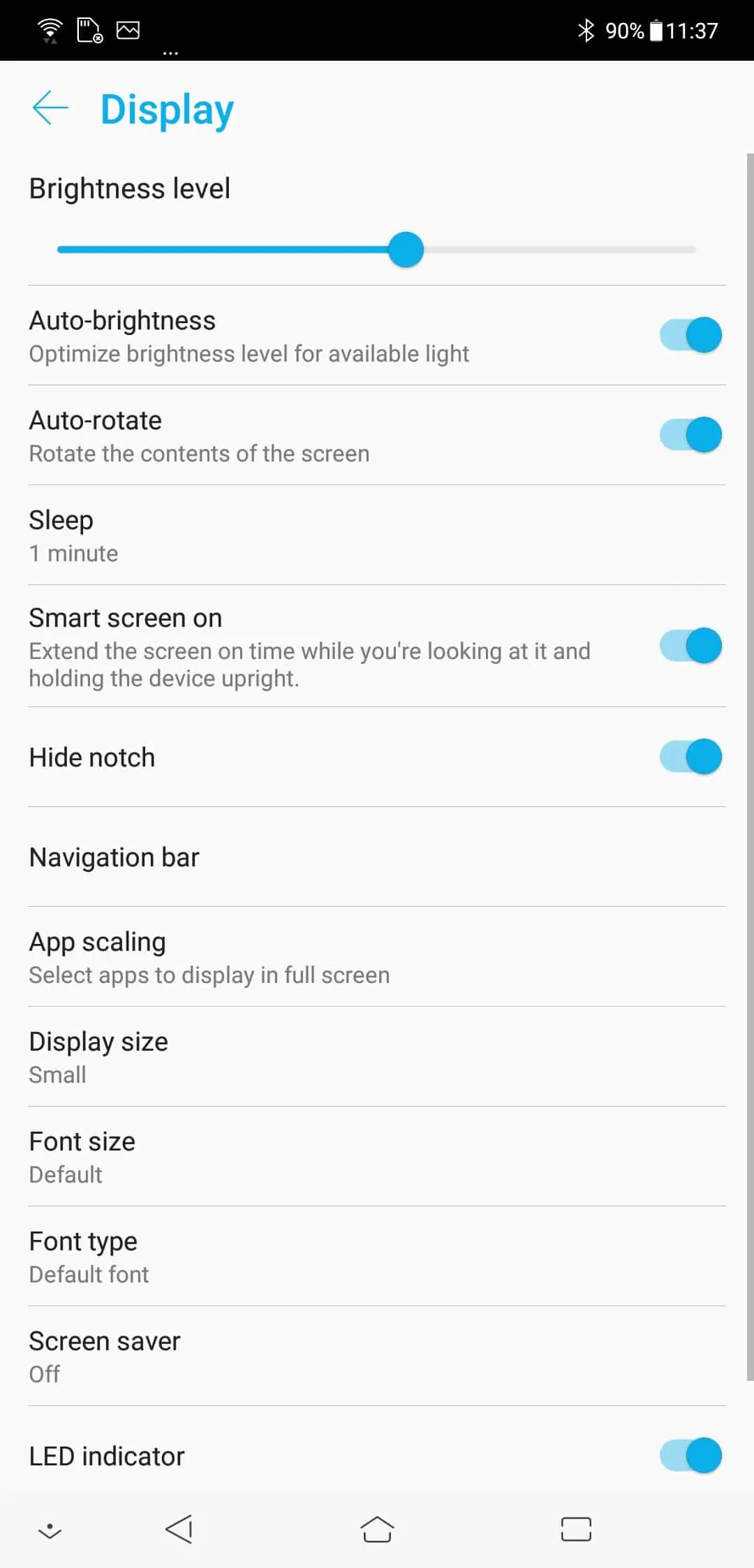The ZenFone 5Z packs some of the best specs currently available, at one of the lowest prices ever attached to a “flagship.”
The new ASUS ZenFone 5Z is the company’s latest flagship device. It has incorporated all of the 2018 features, which includes a taller and notched display. But it has kept the headphone jack. ASUS has packed this phone with some of the best specs available right now, but somehow it is only priced at $499 in the US. That almost seems to good to be true, based on the spec sheet and other functionalities that are included here. But ASUS has offered really decent smartphones at low prices before, so could the ZenFone 5Z be another hit for the firm in the unlocked smartphone market? Let’s find out in our full review.
ASUS ZenFone 5Z Specs
The ASUS ZenFone 5Z specs include a 6.2-inch full HD+ display. It’s an 18.7:9 aspect ratio with a resolution of 2246×1080. ASUS is using an LCD panel here, which has a density of 402 pixels per inch. Under the hood, you’ll find the Qualcomm Snapdragon 845 chipset, 6GB of RAM, and 64GB of storage. ASUS is also selling this device in a 6GB/128GB and 8GB/256GB configuration. There’s a 3,300mAh battery inside, which is going to keep it going all day long and there is support for Quick Charge 3.0 as well.
On the camera front, ASUS is using dual sensors here, with a 12-megapixel main camera that has an aperture of f/1.8, along with four-axis OIS and phase detection autofocus. The secondary module is actually a wide-angle lens with an 8-megapixel sensor and a slightly narrower aperture of f/2.0. There’s no autofocus on that secondary lens, unfortunately. ASUS also has a dual-LED flash included here, so that you’ll get some great images in low light situations. On the front, you’ll find a single 8-megapixel sensor with an aperture of f/2.0.
Other odds and ends on the spec sheet include WiFi 802.11 a/b/g/n/ac for wireless networks. There is also support for Bluetooth 5.0, location tracking using A-GPS and GLONASS and there is also NFC included. Finally, ASUS has kept the headphone jack on the ZenFone 5Z, so you are able to use your existing wired headphones with this smartphone.
ASUS ZenFone 5Z: In The Box
With the ZenFone 5Z, ASUS includes a clear TPU case. There is also a USB-C cable and wall adapter for charging the phone. ASUS has also included a pair of headphones in the box. Now, these earphones aren’t the best but they’re still included at no extra charge, which isn’t a given these days.
ASUS ZenFone 5Z Hardware
The build quality of the ZenFone 5Z is not too surprising in 2018. It’s a glass-and-metal sandwich. It feels really nice in the hand, but you will want to utilize that case that is included in the box, this is because it is slippery, since that is a glass back there. The frame is slightly curved, which is what helps it feel nice in the hand. ASUS has kept the back of the ZenFone 5Z looking pretty clean. You’ll find the dual-cameras in the upper-left hand corner with the dual-LED flash below it, and the fingerprint sensor in the middle. There is the ASUS logo slightly further down, and that’s about it. The ASUS logo doesn’t stand out all that much on this black model, which is a good look, and many are going to appreciate that.
ASUS has put all of the ports on the bottom of the ZenFone 5Z, that includes a 3.5mm headphone jack, USB-C port, and the speaker. There is a single speaker here that is on the bottom of the phone. Unfortunately, ASUS still is not using the earpiece as a second speaker to give everyone stereo speakers. Which would be nice to see here. On the left-hand side, is the dual SIM card slot, while the volume rocker and power button are on the right. The top is where you’ll find another microphone hole. Now the buttons on the right are pretty clicky, which is good. Some phones do have rather mushy buttons, but that is not an issue on the ZenFone 5Z.
The ZenFone 5Z is a pretty good looking smartphone. And it is one of the few that still have a headphone jack, which is pretty impressive, to be honest. The ZenFone 5Z is not going to be the best-looking smartphone to come out in 2018, but it gives you a hint of “premium” while still including all of the necessary features for a flagship smartphone, and it’s still under $500.
ASUS ZenFone 5Z Display
ASUS is using an IPS LCD here on the ZenFone 5Z, which is actually a bit surprising. When you look at the display, you would think it was an OLED or AMOLED display, due to the colors on this panel. So either ASUS has gotten a really good panel on this device, or it has done a great job calibrating it. Either way, the display here looks phenomenal. There’s really nothing to complain about with the display here, though it doesn’t quite get bright enough to use it in direct sunlight. Which is a bit of an issue, especially in the summer. ASUS does allow you to adjust the color temperature on the ZenFone 5Z, so you can make it warmer or cooler, to suit your taste.
ASUS ZenFone 5Z Performance
ASUS has packed the ZenFone 5Z with all of the top-notch specs you’d expect to see in a device that costs almost twice its price. That includes the Snapdragon 845 chipset, 6GB of RAM and 64GB of storage. That means, at least on paper, that performance shouldn’t be an issue. And in our testing of the ZenFone 5Z, that is definitely the case. The ZenFone 5Z was snappy and performed just about every task we threw at it, lightning quick. That’s not surprising, given what’s running under-the-hood here. Since the Snapdragon 845 is the best chipset currently available. The ZenFone 5Z does also perform pretty well when it comes to gaming. We played a number of games on the ZenFone 5Z, including Asphalt 8, and it performed beautifully. The graphics also looked really nice, and there were no slowdowns at all when it came to gaming on the ZenFone 5Z.
ASUS ZenFone 5Z Security
The ZenFone 5Z allows users to secure it in two different ways. There is the fingerprint sensor found on the back of the device that can be used for authentication. And then, ASUS is also using the front-facing camera for facial recognition. So you can simply use your face to unlock the device. Both methods work about as well as expected, both are pretty fast, though the fingerprint sensor is still recommended over facial recognition since it is more secure. The fingerprint sensor is on the back just above where your index finger would be, so it’s easy to move it up a bit and authenticate yourself. Meanwhile, the facial recognition does also work pretty well. Just turn on the display and it’ll unlock automatically. Now there were some times where the facial recognition was a bit slower – resulting in actually seeing the lock screen – but those times were few and far between.
ASUS ZenFone 5Z Sound Quality
There is stereo speakers on the ZenFone 5Z, it is technically using the earpiece as a second speaker, though that second speaker is pretty poor. Covering up the down-firing speaker, you wouldn’t even know that there was a second speaker on the ZenFone 5Z because of how quiet it is. The speaker quality here is pretty normal for ASUS smartphones. With the mids and highs overpowering the bass.
As already mentioned, there is a headphone jack here, which is located on the bottom of the phone. This is a great thing, considering many other smartphones are ditching that headphone jack. And while ASUS did follow the other smartphone trends, it did not follow that one. This means that if the speaker on the ZenFone 5Z is not up to your liking, you can still plug in a pair of headphones and listen to music or watch videos. Without needing to worry about charging your Bluetooth headphones. Definitely a nice feature to have here.
ASUS ZenFone 5Z Phone Calls & Network
ASUS is selling the ZenFone 5Z as an unlocked smartphone, but it will only work on GSM networks. So you’ll be able to use it on AT&T and T-Mobile – as well as MVNO’s that run on those networks, like Straight Talk, Simple Mobile, MetroPCS, etc – but it won’t work on Verizon and Sprint. During the review process, we used the ZenFone 5Z on T-Mobile here in the US, and it worked just like any other smartphone on T-Mobile. Data speeds were comparable to other smartphones, and calls never dropped either. Now like most unlocked smartphones, there is no support for VoLTE or HD Voice on the ZenFone 5Z, so if that is something you were looking for on this phone, it’s not here. Otherwise, the experience is nothing out of the ordinary, and that’s a good thing.
ASUS ZenFone 5Z Benchmarks
With the ZenFone 5Z, we ran the usual set of benchmarks – which we use on every single smartphone. This includes AnTuTu, 3D Mark and Geekbench 4. On AnTuTu, the ZenFone 5Z picked up a score of 260,250, which is lower than what AnTuTu lists the ZenFone 5Z at (as you can see in the screenshot below), however it’s important to remember that you won’t get the same score each time, and there are other models of the ZenFone 5Z with 8GB of RAM which will boost its score. On 3D Mark, the ZenFone 5Z picked up a score of 4,490 in the Sling Shot Extreme – OpenGL ES 3.1 test, and a 3,631 score in the Sling Shot Extreme – Vulkan test. Finally, on GeekBench 4, it got a single-core score of 2324, and a multi-core score of 7780. You can see the full results from these three benchmarks in the gallery below.
ASUS ZenFone 5Z Battery Life
The 3,300mAh capacity battery in the ZenFone 5Z is actually rather impressive. During the review process, we’ve steadily been getting about two full days on a single charge here, which is pretty incredible. Especially since this is just a 3,300mAh-capacity battery and not something north of 4,000mAh. Most people will likely be able to get around four to six hours of on-screen time, and then still have around 20-40% left in the tank. And that is before any of the battery saving modes that ASUS has included here. There are four modes available on the ZenFone 5Z, Performance, Normal, Power Saving and Super Saving. We did all of our tests while running the “Normal” mode, and we did do some gaming in the “Performance” one. ASUS also allows you to create a customized mode to get more battery savings out of this phone on a single charge.
ASUS does support Quick Charge 3.0 here on the ZenFone 5Z. So even with the incredible battery life here, you are still going to be able to charge this one up pretty quickly. We were able to get it from completely dead to around 100-percent in just over an hour and a half. Which is comparable to other Quick Charge 3.0 smartphones with the same battery capacity. This is a great thing to have, especially if you do need to top off your ZenFone 5Z before heading out for an evening of fun.
ASUS ZenFone 5Z Software
At the time of writing this review, the ZenFone 5Z is running on Android 8.0.0 Oreo, with the June 5, 2018 security patch. It did not receive any OTA’s during the review period. It is running a somewhat recent build, though the security patch is now two months old, it is still pretty recent. ASUS is typically pretty decent when it comes to software updates, though they can be slow with Android upgrades, so don’t expect to see Android P anytime soon.
The software on the ZenFone 5Z is pretty similar to any other ASUS smartphone, though there are some changes from Android Nougat-based ASUS smartphones. This starts with the notification shade. Now when you pull down the notifications, the quick settings panel expands, which gives you very little space to actually see the notifications. That can be a bit annoying, especially if you do have a number of notifications in the shade. Now speaking of notifications, the ZenFone 5Z only shows about three icons on the left side, due to the notch here. And with the WiFi icon being there already, that leaves very little space for notification icons. But you can tap the notification bar, and it’ll double in size and show you icons for the other notifications in the shade at the time. This is a simple feature, but one that can be very useful with this notch here. ASUS has also added a feature that allows you to hide the notch here, so you can turn the entire notification bar black, which hides the notch, but it does look a bit odd since the top of the screen has straight corners and then the bottom uses curved ones.
One of the more interesting features here in the ZenFone 5Z is actually the OptiFlex functionality. It’s part of the AI suite of features that ASUS has on offer with its latest Android flagship. It essentially allows apps to launch faster. You can select which apps you want to launch faster or let the system decide, based on your app usage. So your most common apps will launch faster – also the larger apps like Facebook and YouTube, as something like Twitter won’t speed up that much. This is turned on by default when you take the phone out of the box, and you wouldn’t think that it would make much of a difference but it really does. Also in the AI suite is AI Charging. This allows the phone to protect your battery, and it will learn through your pattern of charging when it needs to charge fast, versus when it can charge slower. For example, it knows that if you typically unplug at around 7 AM in the morning, that it will stick to around 80% until about an hour before then and then finish it off to 100%.
ASUS has also made it easier to keep your phone nice and speedy, with the Mobile Manager app. With this app, which is pre-installed on the ZenFone 5Z, you are able to see how much battery life is left (this is an estimate based on your usage), as well as how much RAM is free. From the app, you are able to see data usage, adjust the performance of your battery – change it to a battery saving mode and so forth – as well as clear out your RAM. Now where this comes with 6GB of RAM, you will likely never need to clear your recent apps, but it is a nice feature to have here. The Power Master settings are really nice to have, as you can also adjust which apps are auto-starting when you boot up your phone. ASUS also shows the temperature of the battery, which is a nice thing to have, especially after the Galaxy Note 7 fiasco almost two years ago. This is an app that you’ll find on a lot of smartphones coming out of China, so it’s not exclusive to ASUS, but nice to have, especially for power users out there.
The ASUS software experience isn’t going to be everyone’s favorite, and that’s fine. Not everyone loves Samsung’s software, or LG or even Google’s stock Android approach. But ASUS does have a slew of features included in its software here, and most importantly, it is still fairly fast. That is important as it allows you to have a smooth and consistent experience throughout the operating system.
ASUS ZenFone 5Z Camera
ASUS has really put some good cameras into the ZenFone 5 lineup of smartphones. The ZenFone 5Q which we recently reviewed, had a pretty good camera, especially for its price point. But the ZenFone 5Z has an even better camera, which really works well. The backside has two cameras, with a 12-megapixel camera that has an aperture of f/1.8 and a secondary sensor that is a wide-angle 8-megapixel with a f/2.0 aperture as well. The front-facing camera is an 8-megapixel sensor with a f/2.0 aperture as well. So on paper, it should be fairly decent, and it is. Pictures that we took with the ZenFone 5Z were really good looking. The color accuracy seemed to be on point, without adding much saturation or adjusting the temperature in post-processing either. ASUS also has plenty of Bokeh here for everyone.
Portrait mode, which is the big thing for smartphone cameras in 2018, is here, and it’s actually pretty good. During the review process, we did not have any issues with the ZenFone 5Z not detecting edges. That is an issue that most smartphones have these days, with portrait mode. But even on the front-facing camera, the ZenFone 5Z does pretty well at detecting edges, especially on people. Typically, smartphones would blur out an ear or the side of your face, but the ZenFone 5Z does not do that here.
Now in low light, the camera can suffer a bit. That shouldn’t be a surprise, as most smartphone cameras do have trouble in low-light conditions. But the ZenFone 5Z will provide a pretty good experience. As long as there is a little bit of light available, you should be perfectly fine. Now that is not to say that the ZenFone 5Z won’t have noise in the background of low-light pictures, because it will. But it could also be far worse. The camera on the ZenFone 5Z is actually pretty good, if you didn’t know that this smartphone was under $500, you would likely think it was closer to $700. The ZenFone 5Z still can’t beat something like the Pixel 2 XL, but then again no phone has been able to yet. However, if you do pick up the ZenFone 5Z, you’ll still be plenty happy with this phone and its camera.
The Good
Battery Life
Display
Software Experience
Camera
Headphone Jack
The Bad
Single bottom-facing speaker
Slippery, hard to hold
Not waterproof
Conclusion
The ASUS ZenFone 5Z may not be the first choice for many people when looking for a new smartphone. And that’s simply because ASUS hasn’t really been a big player in the smartphone space, particularly in North America. But it would be crazy to pass up the ZenFone 5Z. It is a great smartphone, even without factoring in the price of the device, which makes it an even better option. The ZenFone 5Z checks pretty much every box. That includes incredible battery life, a great camera, and an excellent display at a low price.
Should I Purchase The ASUS ZenFone 5Z?
Definitely. However, keep in mind that the ZenFone 5Z is only compatible with AT&T and T-Mobile in the US. It will not work on CDMA carriers like Verizon and Sprint. There’s also no VoLTE support on offer with this Android device. Otherwise, this is a great smartphone to grab, and at $499, you won’t find anything better with the same spec sheet and feature set.
Buy the ASUS ZenFone 5Z






































